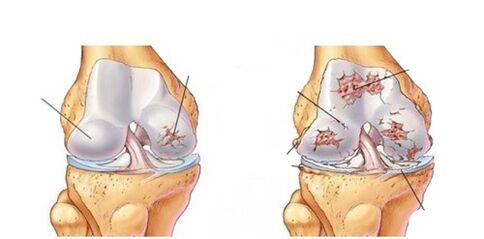Deformable joint-A disease related to the degenerative changes (wear and tear) of cartilage tissue. Cartilage tissue covers the articular surface of bones and provides free movement of the limbs.

This is one of the most common disorders of the musculoskeletal system (13% to 29% of the adult population in different parts of the world). Knee deformity arthropathy (knee arthropathy) is second only to hip deformity arthropathy in frequency.
Causes of knee joint disease
The development mechanism of knee osteoarthritis is still not fully understood. However, the factors that promote the development of pathology have long been known. Some of it is inevitable-it is old age, female, genetic predisposition.
The reasons leading to the development of knee joint deformity arthropathy, leading to accelerated cartilage wear include:
- Obesity (more than 66% of knee joint disease patients are overweight);
- Musculoskeletal system diseases, increasing joint load (scoliosis, osteochondrosis, flat feet, joint system diseases, etc. );
- Increase physical activity, including exercise.
In addition, pathologies that disrupt cartilage tissue metabolism (endocrine diseases, gout) and circulatory system diseases (lower extremity varicose veins, leg atherosclerosis, diabetic vascular disease) promote the progression of knee joint disease. Timely and adequate treatment of these diseases will help maintain the function of the limbs for a long time.
Another common cause of knee injury is knee injury. In this case, the pathology progresses abnormally fast. Therefore, we recommend that all patients with knee joint injuries receive timely examinations and, if necessary, undergo knee arthroscopy to eliminate intra-articular injuries.
When to see a surgeon
After the following symptoms of knee joint arthropathy appear, you should immediately consult an orthopedic doctor-traumatologist:
- Knee pain is the most persistent symptom;
- Crunching when moving;
- Morning stiffness-usually, it is combined with a kind of "initial pain" and disappears after 30 minutes of exercise;
- Joint dysfunction-feeling loose or on the contrary, pathological stiffness, lameness, etc.
At MC, experienced orthopedic traumatologists are accepting appointments. After a thorough diagnosis, they will choose the best method for knee joint treatment: surgery or conservative treatment according to the specific situation.
























